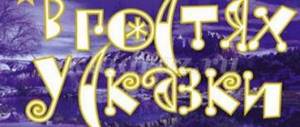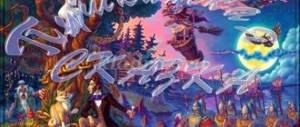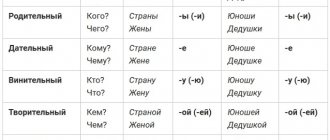Pugs have long won the hearts of people all over the world. And no wonder:
- for those who like to sit at home, the pug is the best friend, he will happily sit on your lap; for lovers of long walks, the pug is an indispensable, hardy companion; for children - the best living toy in the world, a pug will never offend a child.
Pugs are very social by nature. If you already have a dog or cat in the house, don't worry, the pug will get along great with them. He offers his friendship to everyone and receives incredible pleasure from communication. Pugs have a huge sense of self-esteem; they do not recognize any violence against their extraordinary personality.
It is worth noting that pugs tend to accumulate in the apartment. When puppies are born to a mother pug, many breeders are unable to give up their funny tadpoles into the wrong hands and very often keep a puppy, or even two, especially since small dogs will not eat them. So pugs walk around the park in flocks - mother, grandmother, daughter, son...
It is very interesting that dogs of this breed use their paws almost like hands. If a dog with a long muzzle “asks” for a tasty piece with a movement of its head, then the pug will stretch out its hand and paw to the piece, and even move its fingers. He will get the toy from under the cabinet “with his hands”, almost without trying to stick his large head in there. And if the pug wanted to get past a closed door, you will hear an endless drum roll beating on the frame with its paws.
Pugs are very loyal to their owners, leaving any, even the most cheerful, company (be it people or dogs) at the first call. During the owner’s absences, the dog is very sad, sits with a blurred gaze, but there is no limit to joy when Friend returns, while the pug performs the “tumba-yumba” dance on his hind legs, climbs into his arms, licks and squeals with happiness.
Muzzle, tail and four legs. Dog quizzes
I offer you material about dogs: an educational game, some information about the history of the canine people, a quiz about dogs in literature, interesting facts about dogs and the “Dog Waltz” clip. To make playing more convenient, it is better to switch to full-screen mode. Select from three answer options the one that seems correct to you, click on the square in it, and then click on the “checkmark” and then the arrow to go to the next question in the lower right corner.
Man and dog. We've been together for thousands of years. During this time, people changed dogs, improving them, creating new breeds. And they changed us, although they clearly didn’t think about it. I wonder why Stone Age people did not drive away the wild animals that were the ancestors of most dog breeds? After all, they are of no use: no meat, no milk.
Maybe some primitive girl wanted to play with a touching puppy, the mother gave in and allowed it, and then it was a pity to throw it away, they persuaded the father, he, like everyone else, cursed at first, but then got used to it. This is how people made a friend in the animal world. And when they saw how he bravely attacked stronger animals in order to protect them, perhaps the hard hearts of the Mesolithic people were touched by his selflessness.
Let's talk about these noble, loyal, loving creatures, about whom many say, not without reason, that they are better than us. By the way, the idea of dogs as exceptionally subtle and sensitive creatures has existed for a long time among a variety of peoples.
Here are some interesting facts about dogs:
- The Nenets believed that only shamans and dogs could see spirits
- The Selkups , another northern people, believed that spirits judge a person by how he treats a dog. If the child was at home without adults, the dog always stayed with him.
- Among the ancient Egyptians, a dog accompanied a person to the afterlife, and these people cared about the afterlife, perhaps more than about earthly existence. Dogs are often depicted on the walls of Egyptian tombs, and one of the important gods of the Egyptians, Anubis, has a dog's head. He was the god of the underworld, and it depended on him whether the human soul would be able to safely bypass all the traps of the underworld.
- The inhabitants of Mesopotamia, the mysterious Sumerians , wrote about dogs on their clay tablets back in the 4th millennium BC.
- Assyrian kings, great lovers of lion hunting, took huge dogs with them to this dangerous task, like our mastiffs. Their entrance to the underworld was guarded by a dog with four eyes.
- Among the ancient Greeks , the entrance to Hades was guarded by the three-headed Kerberus, also known as Cerberus.
- Odysseus , when he returned to his native island of Ithaca after 20 years of wandering, was recognized only by the old dog - Argus.
- The hunter Orion, by order of Zeus, was taken to heaven with his two dogs - the Greater and the Lesser, this is how the emergence of two important constellations is explained.
- In the constellation Canis Major there is the brightest star in the night sky - Sirius, which was revered by all ancient peoples. The Egyptians knew well that with the beginning of the morning sunrises of Sirius, the flood of the Nile began.
- The Greeks called Sirius the Dog Star , the Romans also associated the name of the star with a dog, in Latin “dog” is “canis”. Therefore, the period of its morning sunrise in early July, when intense heat set in, was called “vacation”. It was believed that during this difficult time it was better to stay at home.
- The great Greek mathematician, mystic, philosopher Pythagoras believed that it was a dog that could take the soul of a person leaving for the afterlife.
- The brilliant Greek Socrates, who lived a little later than Pythagoras, at the trial where the democratic Athenians sentenced him to death, swore not by the gods, but by a dog .
- The famous Greek Cynic philosopher, also known as the Cynic Diogenes, known for living in a barrel, walked around the city during the day with a lantern, explaining that this was how he was trying to find a person, he did not respect people, and considered stray dogs to be the freest creatures.
- Many centuries later, another great philosopher , Arthur Schopenhauer, the one who coined the word “pessimism,” told his poodle named Atman, if he was not behaving very well, so that he should not become like a man. So there are clearly dog tracks in philosophy.
Here are the quiz questions on the history of the canine people.
- Ancient peoples greatly revered the brightest star in the sky, Sirius, which was part of the constellation (Canis Major, Canis Minor, Canis Good).
- In ancient Egypt, the god Anubis had the (paws, tail, head) of a dog.
- Bred at the end of the 19th century, it became the number 1 dog of the 20th century. Police dogs, security guards - they became real movie stars. (German Shepherd, Fox Terrier, Collie).
- These dogs were bred in one of the monasteries in Switzerland to save travelers in the mountains (bull terriers, shepherd dogs, St. Bernards).
- The first living creature to rise into space was a dog named (Laika Belka, Strelka).
- The Greek philosopher Diogenes considered a symbol of freedom (a biting, barking, stray dog).
- Egypt is the birthplace of (greyhounds, shepherd dogs, mastiffs)
- Ancient Chinese legends said that these dogs come from completely different ancestors than other dog breeds, namely from bears (Sheltie, lapdog, chow chow).
- This dog breed was bred in monasteries in Tibet. The monks considered them a talisman that could warn of danger. It is called the “bearded dog from Tibet” (Chin, Lhasa Apso, Spitz).
- In ancient times, these dogs were bred in temples in Japan. In Japanese, the name of this breed means “treasure” (Briard, Chin, Italian Greyhound).
- During the war, a shepherd dog named Dzhulbars cleared 7,468 mines and more than 150 shells and took part in the Victory Parade. For heroism in the war, Dzhulbars was awarded (the medal “For Military Merit”, two kilograms of sausages, and became Marshal Zhukov’s dog).
- Sheepdog Dina distinguished herself in the “rail war”. She (distracted the guards so that the soldiers could plant a mine, quickly planted explosives on the train ahead, lay down on the tracks and stopped the train).
- When the orderly dogs found a wounded soldier unconscious, so that he would come to his senses, they (licked his face, pulled his legs, bit his earlobe). Correct answers are in red
There is nothing to say about literature. Who will forget the endlessly sad story of White Bim and the grief of our school childhood Mumu? And every time people lose so much in comparison with dogs. Sad. However, there is one of the funniest books in the world, “Three Men in a Boat,” which without Montmorency’s dog would still not be so sparklingly funny. Here are just some books where dogs are the heroes.
Would you like another quiz about dogs - literary heroes ?
- Participant of the team pulling a large root crop. Well, there was also a grandfather and a woman...
- The dogs from this fairy tale by Andersen had eyes like tea cups and even like mill wheels (Flint).
- Her owner couldn't speak, so he called her...(Mumu)
- This dog once got lost and became a circus performer named Aunt. And suddenly one day at a performance she heard her name called... (Kashtanka).
- What dog went hunting not with a gun, but with a photo gun?
- This dog had a cherished desire to defeat his enemy the dog Hector. Finding himself in a magical land, he made this wish, and it came true. (Well, remember, his owner's name was Ellie)
- The dog Montmorency, together with his owner and his friends, made a fascinating journey in a boat on the Thames. How many people were in the boat? ("Three in a Boat. Not Counting the Dog" by Jerome K. Jerome)
- The son of purebred setters, he was born “defective.” The correct setter should be black. Only his ear and hind leg were black (White Beam, Black Ear).
- What breed was Artemon, Malvina's friend? (poodle)
- This dog is shown on TV every evening. He is very smart and exemplary. (Filya).
- To appear strong, she barked at the elephant, and her name was (Moska).
- This huge black dog with glowing eyes, according to legend, chased representatives of the English family (the Baskervilles).
I am enjoying re-reading Konrad Lorenz's book "A Man Finds a Friend." He is at the same time a major scientist, a writer who knows how to captivate with his stories, and an expert in dog psychology. And when I want to relax and unwind, I read books by James Herriot, an English veterinarian and writer. There is so much observation, love for animals and excellent English humor. And here is a small but very funny poem about puppies:
You are a puppy and I am a puppy, We knocked each other off our feet - And we roll and roll in a dirty snowy mess.
What are you barking, Master? You see, people are having fun!
And here is a lovely poem by Boris Zakhoder, which gave the title to my publication:
As soon as we slightly overtook the monkey, directing our steps towards the heights of progress, the muzzle, tail and four legs immediately jumped after us.
Sometimes we happen to lose our way (It’s dark all around, and we can’t see a thing), But they won’t let us get lost forever - A muzzle, a tail and four legs!
Let fierce predators howl in the thicket - You are not afraid of any enemies. - Don't be afraid, we are close! - The muzzle, tail and four legs will calm you down.
And if sometimes Melancholy gnaws at you (There is such melancholy, even if you run), Believe that no one will help you like a muzzle, a tail and four legs.
A little meat, a little porridge... (In short, you won’t have to go into debt!) A mattress in the corner... And here they are - ours: A muzzle, a tail and four legs!
If we talk about dogs in music... There is, for example, one very famous piece. Do you remember what happened to you to play the piano with one finger? In different countries this work is called differently:
in Germany and Belgium it is called Flea Waltz in the Netherlands - Flea March in Hungary - Donkey March in Bulgaria - Cat March in Mallorca - Fool's Polka in Finland - Cat Polka in France - Chop Cutlet
But we call it “Dog Waltz” . I tried to find who created it. The Internet, which loves to attribute everything to Chopin, claims that it is he who is the author of this immortal work. But more knowledgeable authors write that the composer wrote “The Waltz of the Little Dog”, dedicating it to the dog George Sand, and has nothing to do with the favorite play of everyone who likes to beat the keys with two fingers. I made a short clip, maybe it will make you smile.







